The Article
Surfactant: Cleaning Your Vinyl, A Buyer’s Guide
21st September 2020
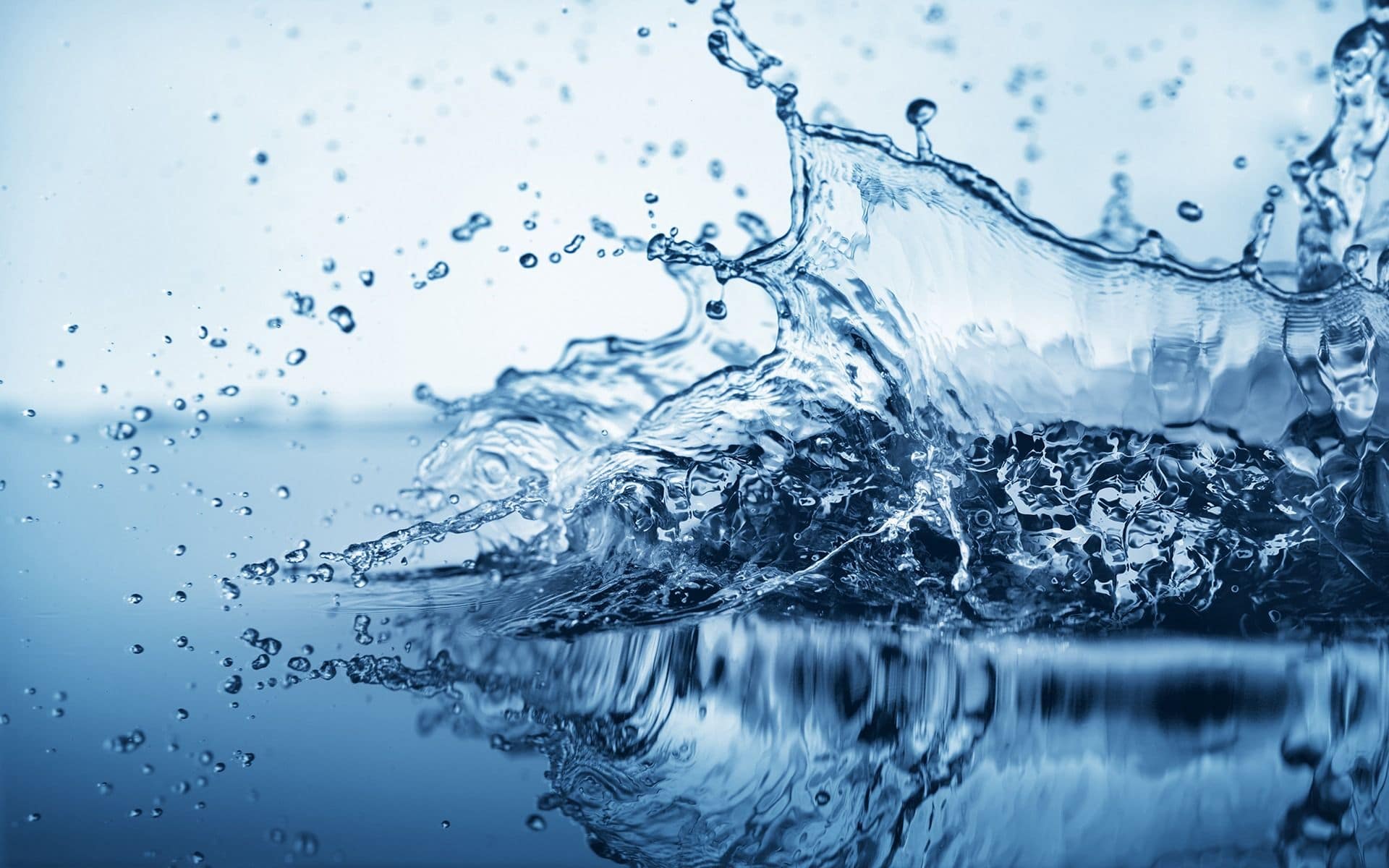
One of the most important tools in the armoury of the vinyl fan, Paul Rigby asks what they are, why they’re important in terms of vinyl cleaning and which surfactants you should buy
I’ve been testing and using vinyl cleaning products for well, decades. During that time, I have progressed from budget, manual felt pads and brushes to manual cleaning machines, motorised cleaning machines with vacuum pumps of various types and quality and finally, ultra-modern and still-developing ultrasonic technologies.
It’s very easy to be dragged into a technology-centric point of view when looking at vinyl cleaning. As if the machinery is all and that your vinyl cleaning stands and falls upon it and only it.
It’s very important. That is true. Critical, even. That said, it is not all. If you don’t look at the other areas of vinyl cleaning then you will drastically diminish the efficiency of the vinyl clean itself.
That is, even if you have a top-of-the-line, very expensive ultrasonic cleaner, if you ignore the rest of the toolkit that is required to clean your vinyl record, then the final results, the final ‘clean’ will be reduced in quality. By how much? That’s difficult to say and tough to stick a number upon but, at a guess, I’d say by as much as 25%-50%. Depending on the technology you are using.
If you take the machine out of the picture for a moment, if you look at the remaining vinyl tools that I use on a regular basis, the surfactant is next in line in terms of importance.
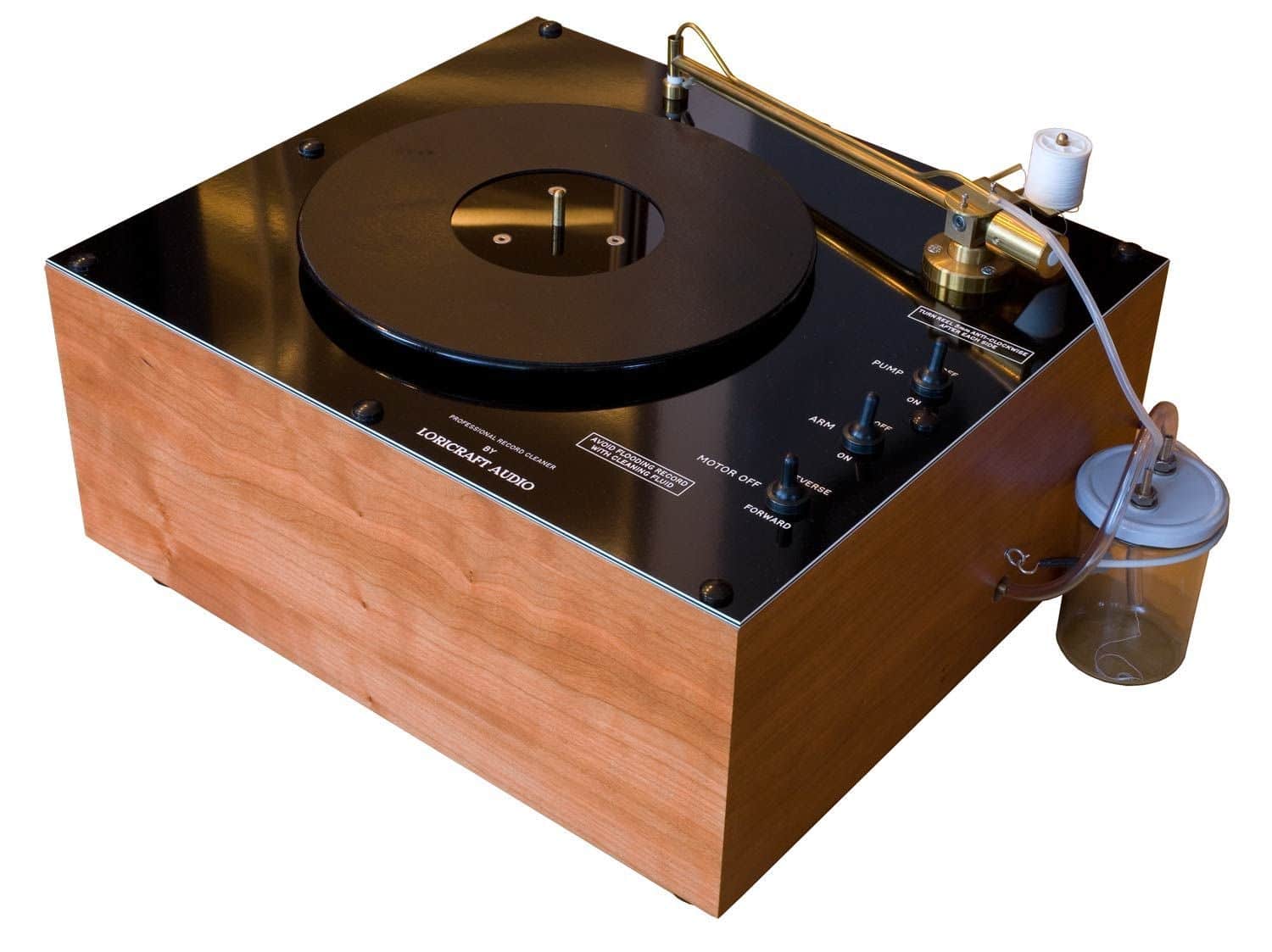
Surfactant is basically a liquid that you apply to the record, before the cleaning machine and any other liquid you might wish to use comes into play. It’s there to aid and enhance the cleaning process. It doesn’t clean the record itself but allows your vinyl cleaning machinery and liquid to do a better job. It assists them. I wouldn’t dream of cleaning my records without it.
So how does surfactant help your vinyl cleaning hardware in its cleaning task? By reducing surface tension.
When you use your favourite liquid to clean your record – no-matter what piece of hardware is involved – when your cleaning liquid is in play, it has an issue. It can’t get close enough to the vinyl to do its job because of surface tension. Don’t forget, we’re talking about cleaning grooves that exist on the micro-level here. Hence, any surface tension existing in that area will act as a barrier and because grooves are so small, that barrier is pretty large and strong. Thus, the effect prevents the cleaning liquid getting right up close to the vinyl surface, reducing its effectiveness.
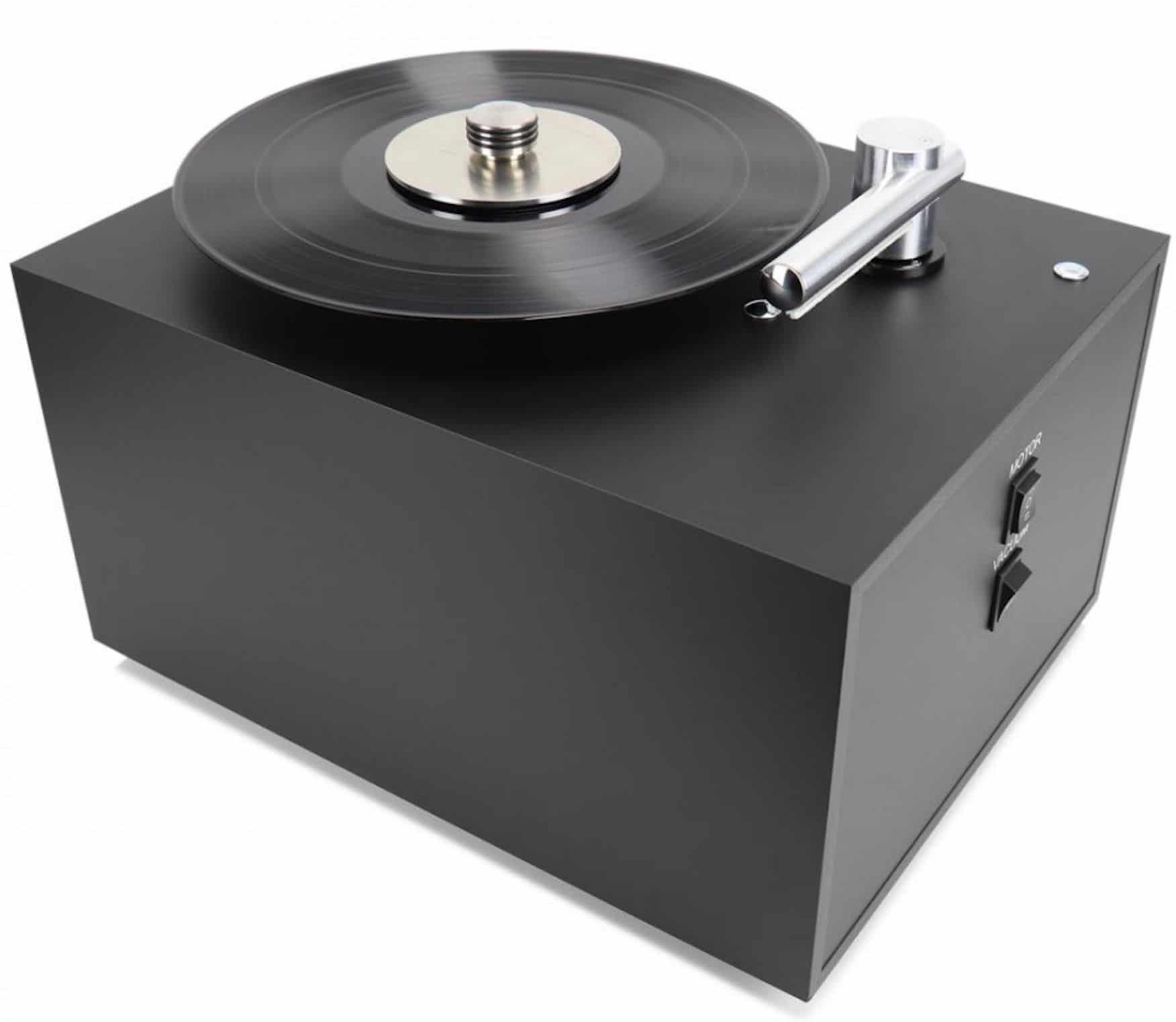
Yes, if you clean your vinyl without surfactant being involved, your vinyl will still benefit. You will (or should) hear a sonic improvement after you put your vinyl through the cleaning process. But that cleaning effect will be reduced. Like my childhood school reports used to say? It ‘can do better’.
So surfactants remove surface tension. In effect, a surfactant makes your cleaning liquid wetter. This is why you will see some commercial surfactants labelled as Wetting Agents. It’s another name for the same thing. You’ll find numerous Wetting Agents in photography, for example. They perform the same sort of tasks in that area too.
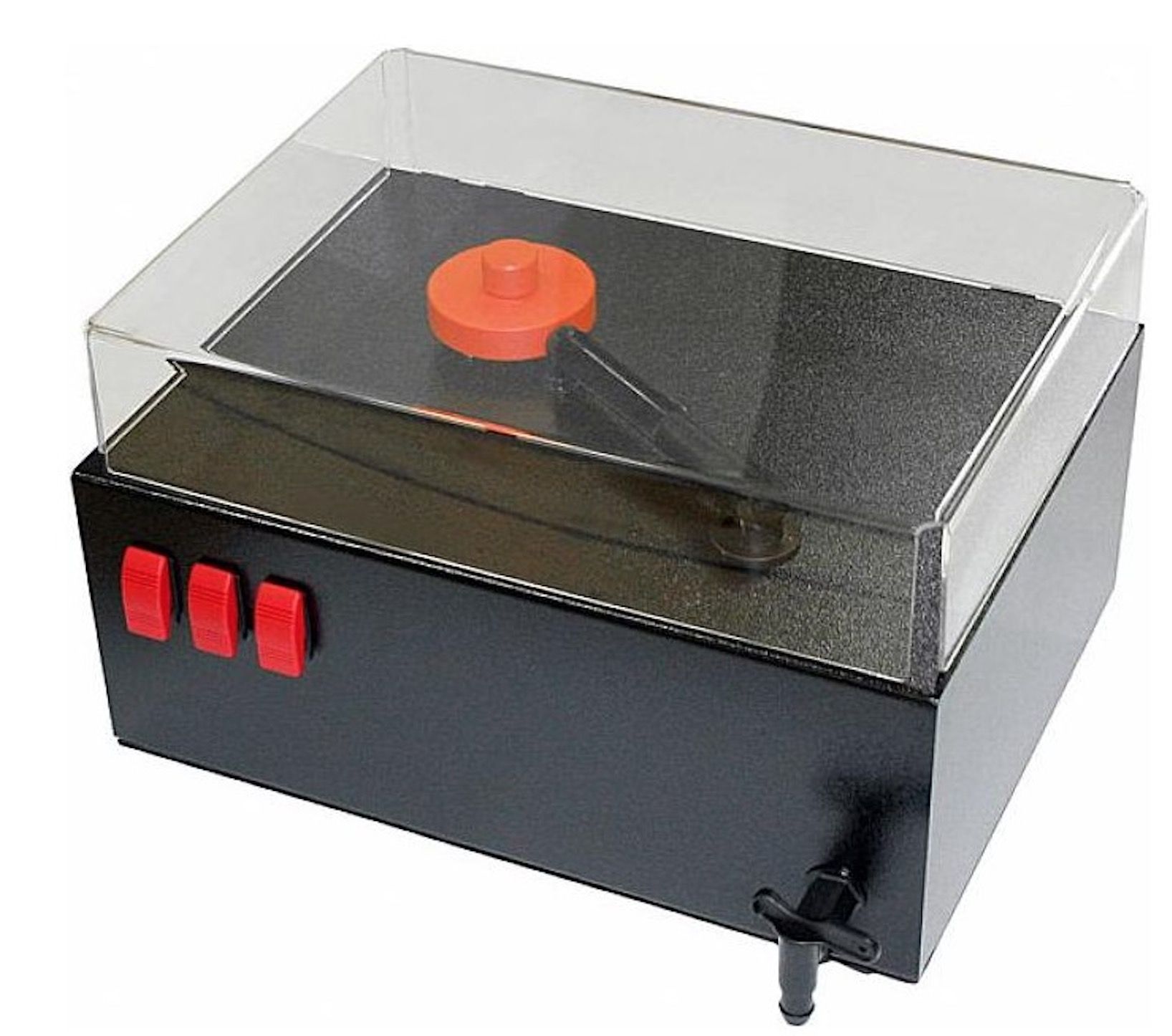
Hence, if you look right up close and personal at your cleaning liquid. If you were able to look at the bits of the liquid that are doing the cleaning job? Well, a surfactant allows those bits to have more and greater contact with the vinyl surface.
HOW IT’S USED
As I say, to use a surfactant, you apply it directly to the surface of your vinyl. You initially prepare the surfactant before use. Normally, you would dilute it in distilled water although some liquids arrived pre-diluted. Surfactants in their original and pure form are normally quite concentrated so you might dilute one part surfactant to 200, for example. That might vary, it depends on the product.
Once mixed properly, you apply drops to the vinyl surface. You spread it around the area of the vinyl with a brush or somesuch then insert it into your manual cleaner, ultrasonic cleaner or whatever cleaning apparatus you have to hand and then clean as normal.
When the cleaning (and subsequent drying) process has been completed, the surfactant should have been removed along with your normal cleaning liquid, leaving a spotless vinyl surface, ready for play. I do like to add a final rinse, though. Giving the vinyl record another cleaning cycle without surfactant being involved. Why? Because I don’t know what the long-term effects are of surfactant residue lying on vinyl. That is, in terms of weeks, months and years. So I’m being careful and cautious.
I will leave the detailed, step-by-step cleaning instructions of cleaning your vinyl with a surfactant to another feature or features because I intend to create three cleaning features (and videos) in the future. They will focus on cleaning your vinyl via manual methods, a vacuum-based cleaning machine and an ultrasonic cleaner. Each will need different cleaning approaches. The publication of this feature is a necessary precursor to those How To… articles because surfactants will be mentioned in all of them.
PREPARATION
So then, you’re sorted? Just grab the nearest surfactant and you’re off and running?
Well, no.
That’s a bit like saying, grab the nearest turntable and you’re off and running or the nearest DAC or speakers. No. There are good and bad surfactants. There are also variations in amongst the good batch of surfactants. They, like anything in hi-fi, vary. Each performs differently.
For this feature, I looked at five products, most of which need to be diluted in distilled water. Don’t use tap water. That’s contaminated with all kinds of chemicals. Use a purified water. Distilled water. I would avoid de-ionised water which – so I hear – doesn’t destroy bacteria in the water. Distilled does that. You can grab distilled water from all over the place including sellers on eBay, Amazon and direct via the Web. Saying that, if you have trouble sourcing a supply of distilled water, check out the link below for a source I use. The source I use is also used by research establishments and industrial companies and I’ve never had an issue with them.
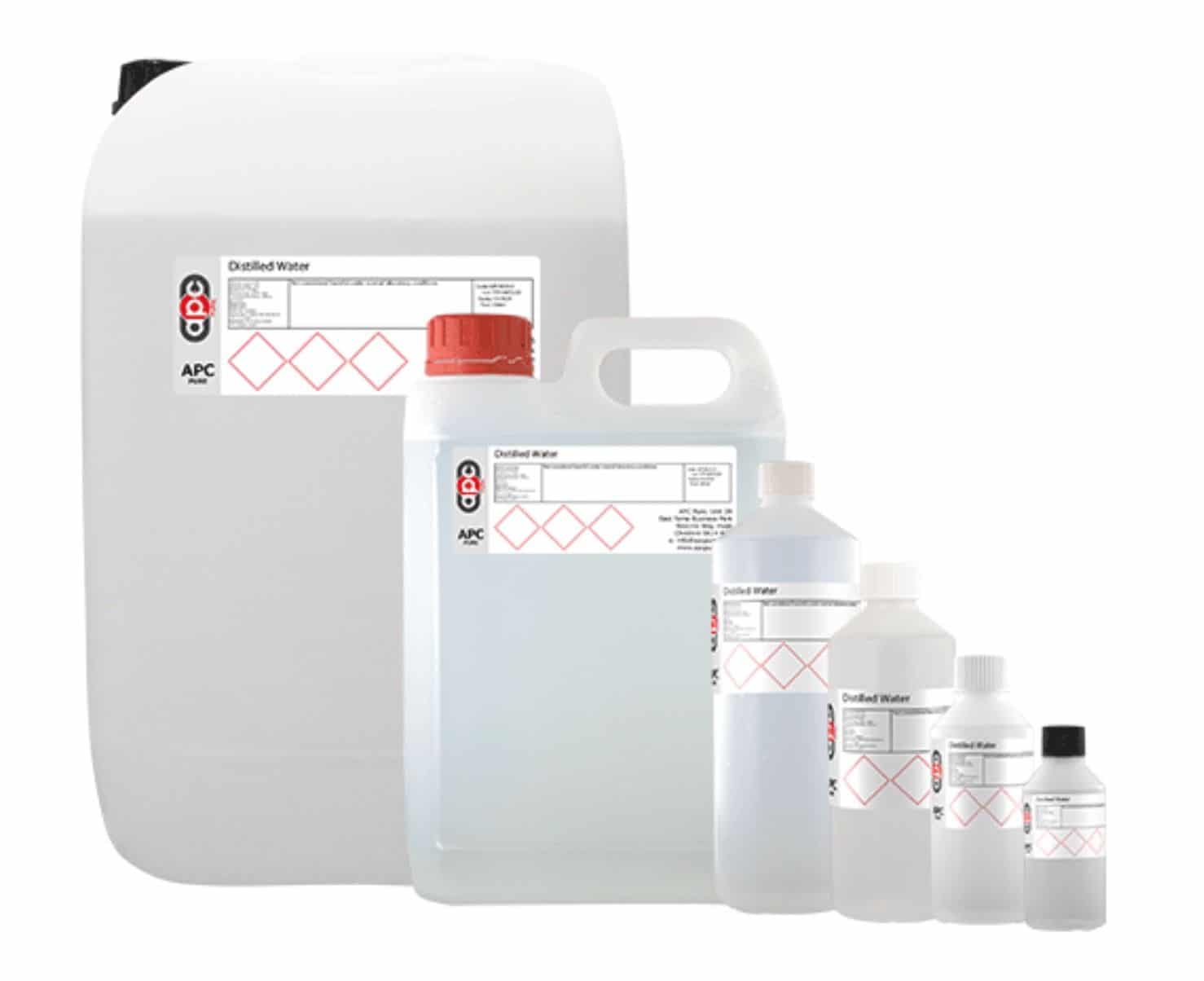
As I’ve said above, when you’re diluting your surfactant, you’ll be popping in a few drops into litres of water. That’s the sort of ratio you need to expect. So be prepared to grab a spare bottle of suitable size to store your diluted surfactant. Also, depending on the surfactant purchased, don’t be surprised to see very small bottles of surfactant indeed. Don’t be alarmed either. At the rate of normal vinyl cleaning use, even a tiny bottle of surfactant will last a long time because, as I say, you’re using a few drops of surfactant into a litre or two of distilled water and then its going to take quite a while just to run through that first batch.
Easy-to-grab storage containers can be a litre, litre and a half or two-litre water bottle. Using an older spring water bottle, of the type you might purchase from a supermarket, is useful because it means that the bottle itself will be pretty clean and won’t be full of left-over chemicals that will need excessive cleaning for use.
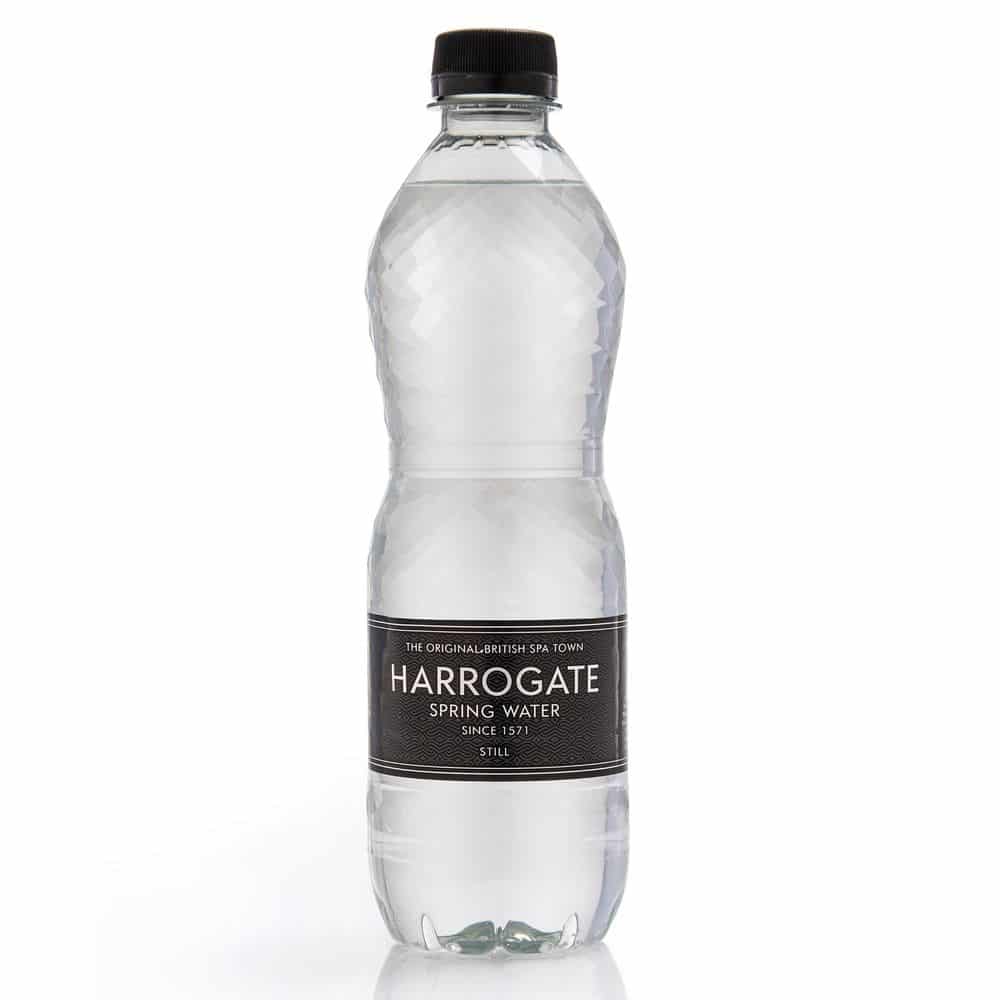
If you use an empty spring water bottle – make sure it has a screw top – then you still need to clean it out but the effort is minimal. Fill the bottle a third of the way with distilled water. Give it a good shake. Empty the bottle. Then repeat twice more and you should be good to go. Don’t clean it with tap water because you’ll leave a chemical residue.
Once the diluted surfactant is in the newly cleaned container, store it in a cool dark place, certainly away from sunlight.
Because I know that I’ll be cleaning lots of records for years to come, I like to grab a 25 litre barrel of distilled water. Partly because it will last for a while and partly because buying in bulk saves cash. Then I store that on its side having previously added a barrel-like tap which you can buy separately and screw to the container’s outlet. Propped on its side you can then use the newly fitted tap to fill your empty litre container when necessary.
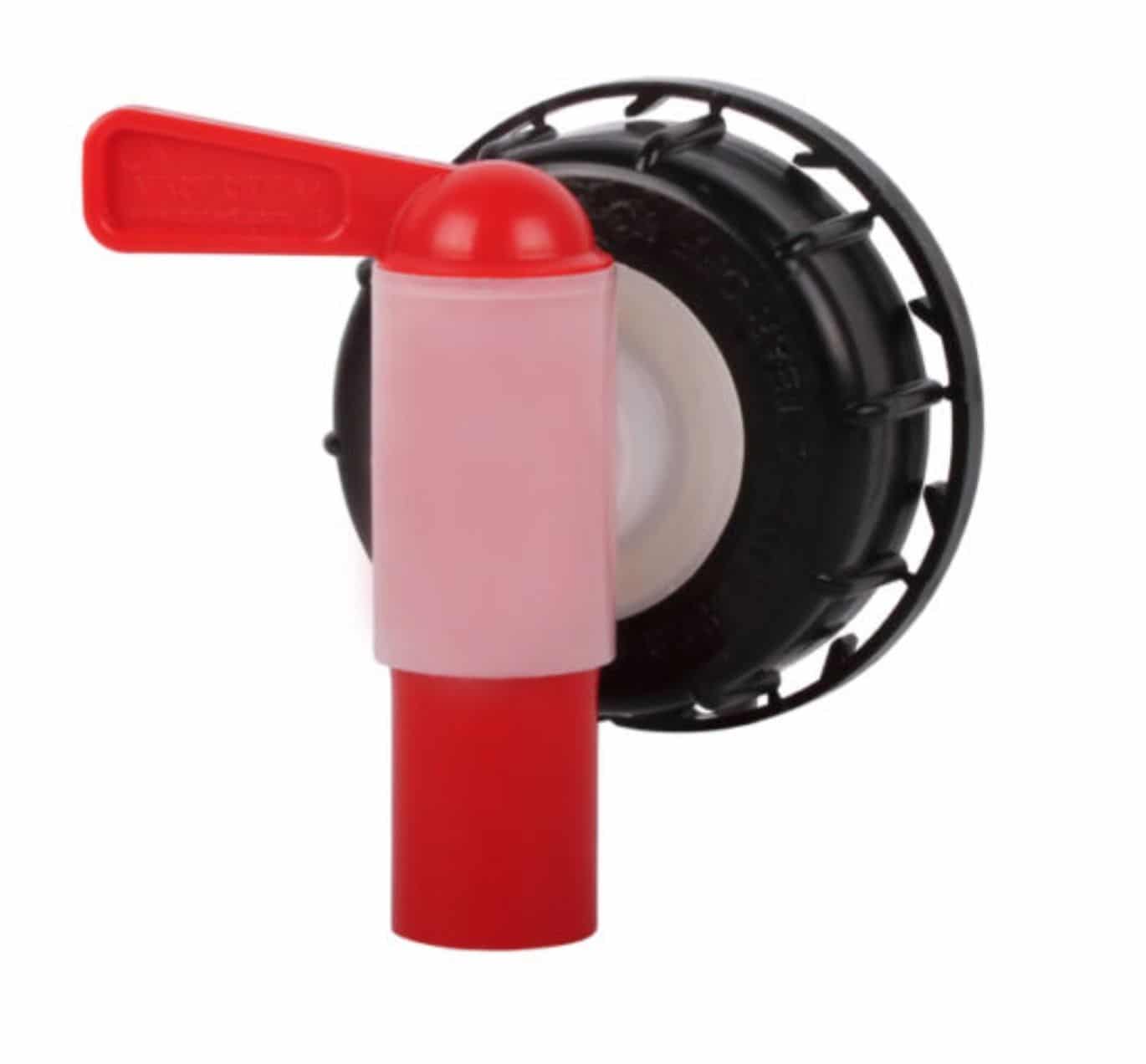
When you’ve diluted your surfactant and you’re standing there with your two litre bottle of diluted liquid, you’ll need to decant that into a smaller bottle for day-to-day use.
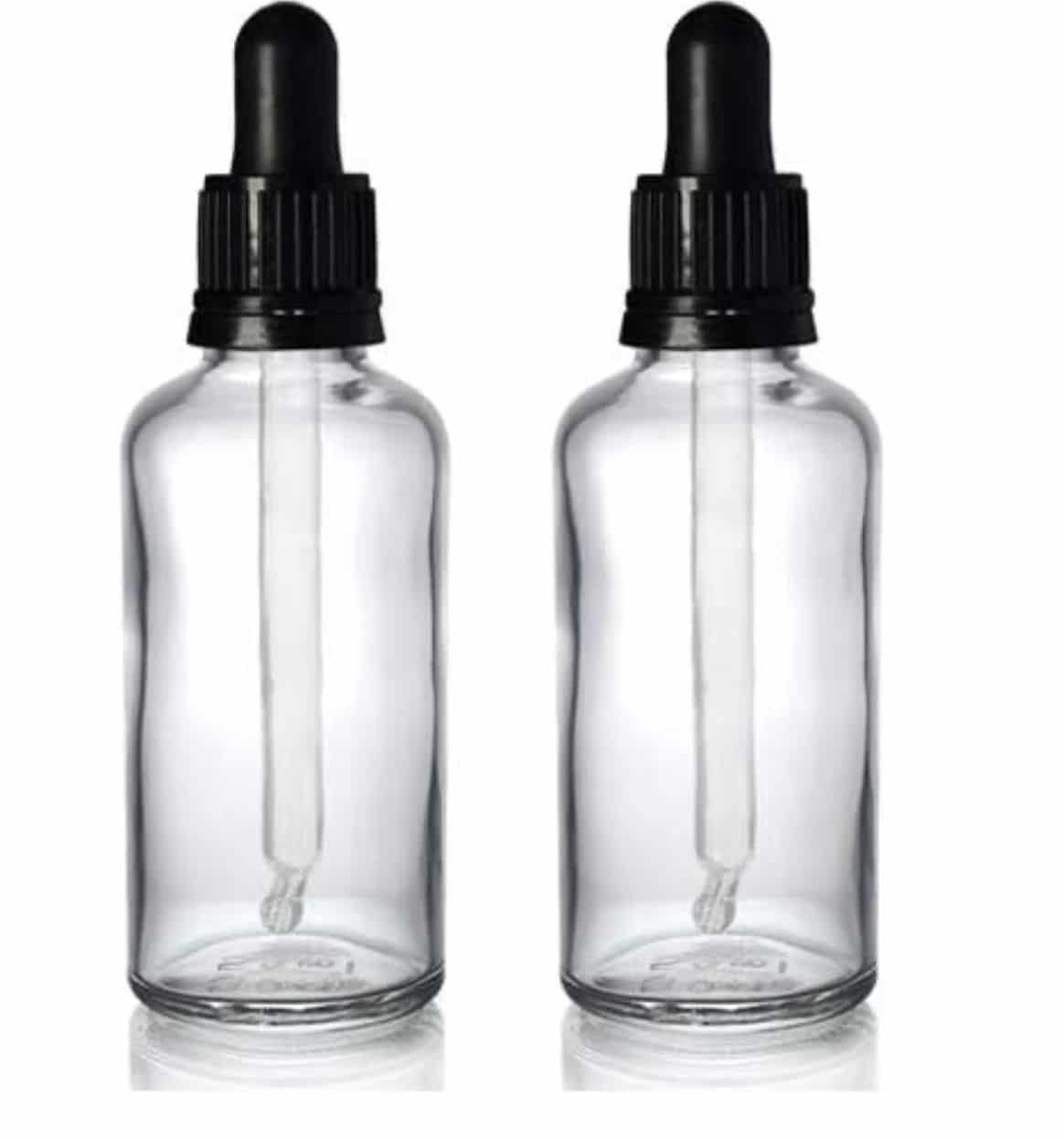
Take the larger litre bottle with you to sit next to your cleaning machine, to act as a convenient refill but use a smaller bottle for the actually cleaning. Otherwise, the larger bottle will be rather unwieldily. I apply my surfactant with a glass eye-drop/pipette. I bought mine as a two-bottle set from Amazon. Again, I’ll put a link at the bottom of the feature in case you need that. Applying the surfactant to the vinyl surface using a pipette means I can be more exacting in my surfactant application to disperse the liquid evenly around the disc. It also means that I can avoid wetting the record label.
I can talk a lot more about the application of the surfactant, the dos and don’ts, what to do and when in the vinyl cleaning features/videos I mentioned above. So, if you have lots of questions popping in your head right about now, hopefully they will all be answered within those forthcoming features. For now, the tools listed above are what you will need, to use the surfactant for vinyl cleaning.
SURFACE OR BATH?
Some surfactants are aimed at users of ultrasonic machines. The latter normally arrives with a bath of liquid that is fed into the machine to then help clean your records. Some manual machines feature a bath system too.
There are surfactants out there that are designed to be added to the bath itself and not applied directly to the surface of a vinyl record. These bath-oriented surfactants tend to be a concoction of ingredients, some of which are best not applied directly to the vinyl surface. For example, the liquid supplied by Degritter and listed below, contains a surfactant but also some alcohols. You should not apply alcohol directly to the vinyl surface, even if it is part of a larger recipe. Hence, Degritter is correct to indicate that its surfactant is to be added to the bath.
Testing bath-applied surfactants means that in fact, I’m testing the company surfactant with the company cleaning liquid too because they’re mixed in. It’s the best I can do though because the company does not supply its surfactant as a separate entity.
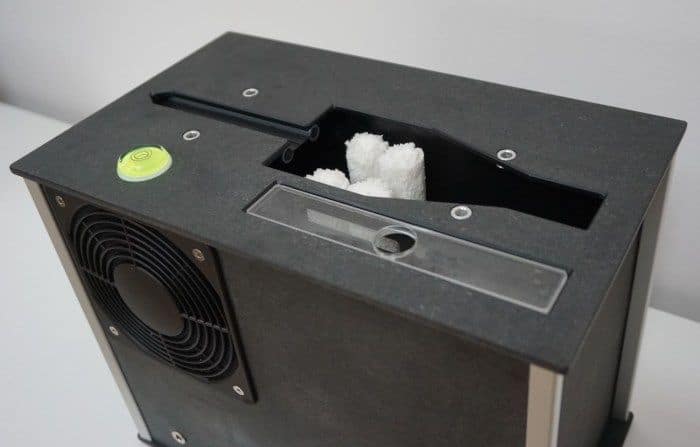
Before you ask, yes I did undertake a series of tests comparing surfactants added to a bath to those surfactants added directly to the vinyl surface. I found the latter won out every time. Surfactants applied directly to the vinyl surface proved to be more efficient and better performing. The bath-filled surfactants did a decent job, they did work. Just not as well as the directly-applied liquids.
Before we dive into the list itself, is it comprehensive? No, absolutely not. There are liquids out there that I know about and can’t afford because they’re too pricey to test at the moment. Nonidet NP-40 was one of those. I could buy it in but it was too expensive for my limited funds. During the tests a small bottle could be had for £100. As I was editing this feature I did see a larger bottle available for £64. Hopefully the price will fall further and then I’ll buy it in for testing.
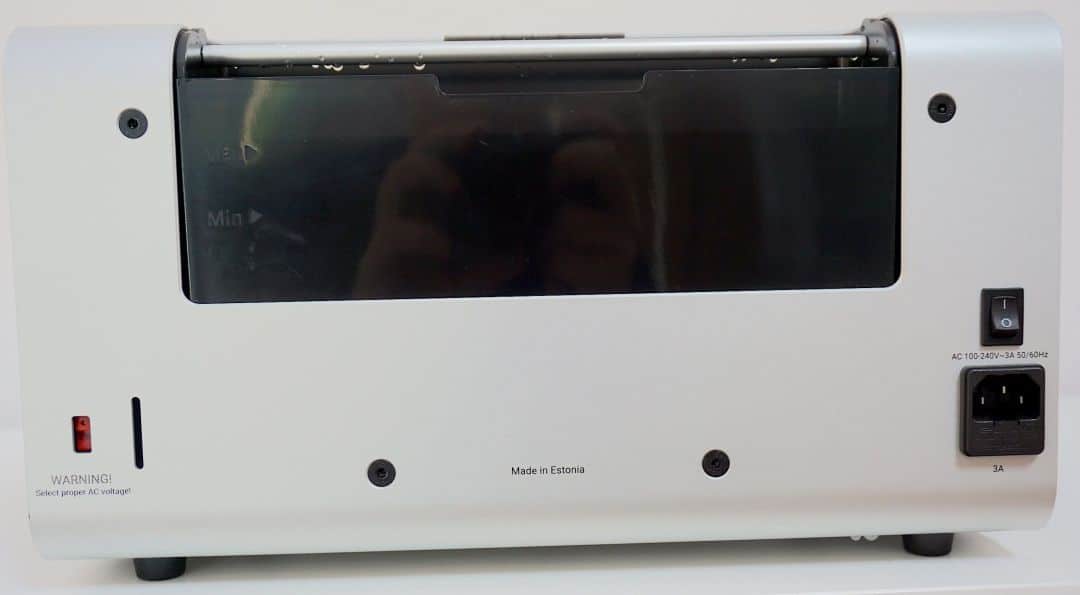
There may be other liquids out there that might be awaiting discovery. If I am made aware of them then again, I’ll test them whenever I can to update this feature.
To keep the size of this feature to manageable levels, I have restricted my actual list to those surfactants that I have used and tested and have lots or at least some redeeming features. That is, surfactants that I recommend. I’m happy to talk about others in comments or messages to me on my site, YouTube channel or other social media outlets I reside within.
TESTING TESTING
To test the following surfactants, I used the best ultrasonic cleaner I could get my hands on. That meant using a Degritter.
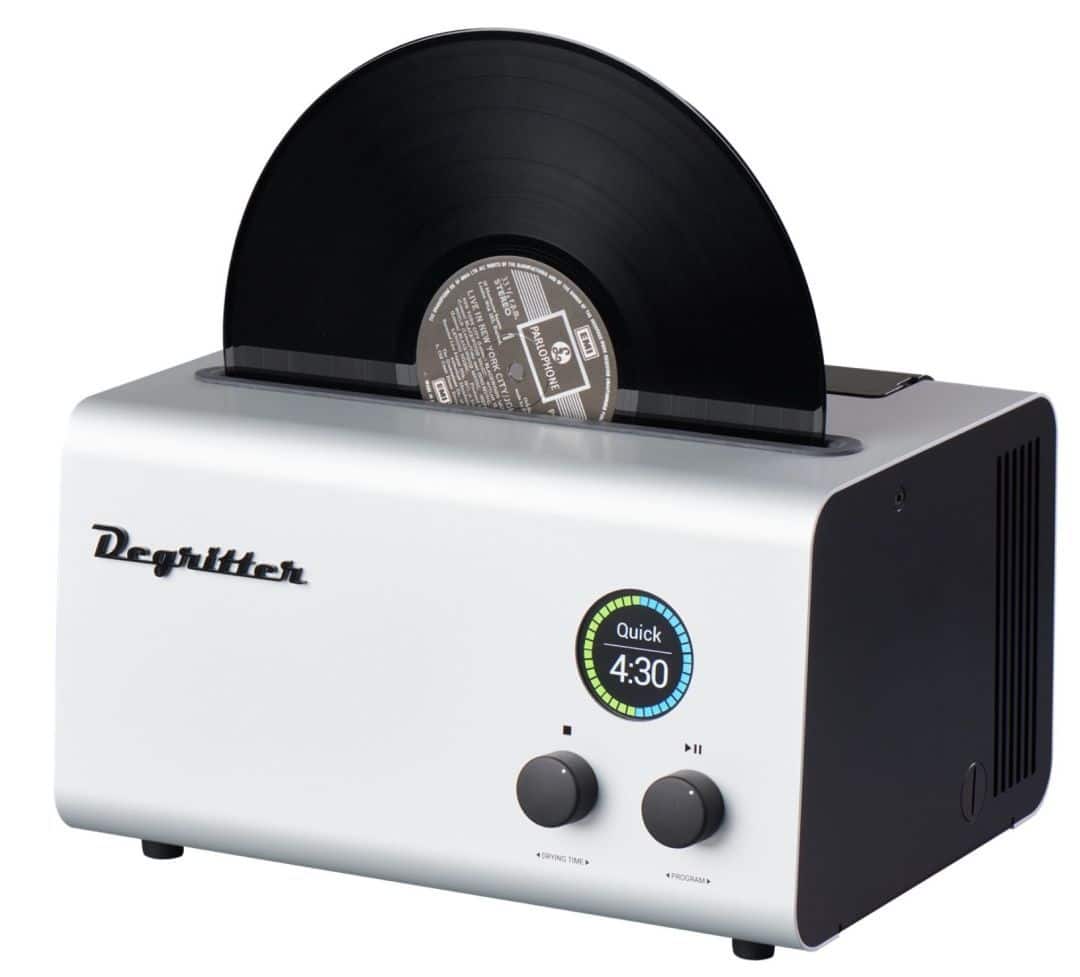
Testing one surfactant with another meant a lot of A-B tests and complex cleaning patterns and multiple cycle cleans to reinforce my final conclusions. It took a long time to run through which is one reason why this feature has been delayed and delayed again.
THE SURFACTANTS – THE LIST!
Despite the fact that all of the following liquids are recommended. I still retain favourites within the list. Hence, I’m going to do is list the surfactants in reverse order. With No.1 being my most preferred product. Prices are ‘per bottle’.
No.5: AUDIO DESK
Price: £14
TO BUY: https://ebay.to/33QmBWB
To be fair to Audio Desk, the company doesn’t actually list this liquid as an on-disc surfactant, per se. Not because there’s any risk of damage to your vinyl if applied directly but because Audio Desk sees its best use as part of the machine’s general cleaning process. Hence, you apply it to the bath of an ultrasonic cleaner and the surfactant does its job as part of the larger cleaning process.
It’s a combo liquid containing a surfactant but also cleaning ingredients but I wanted to test it anyway. I was curious.
You will need to dilute this 35ml bottle of liquid into around four to four and a half litres of distilled water which means that it will last quite a while if used in an ultrasonic bath.
If you decide to apply it directly to a record’s surface then one tiny bottle will last for many months. It provides good value, therefore.
I have no idea what’s in the liquid, Audio Desk keep it a secret but I hear from sources, close to the company, that no alcohol is included so a direct vinyl application should be fine.
I tested the liquid from the bath, as part of a larger cleaning cycle but also directly applied to the vinyl surface.
The results showed that the liquid worked well, better when applied directly to disc, I have to say. The cleaned disc showed improvements to the control within the midrange, treble offered a better structure and bass offered admirable character. The soundstage, as a whole, was quite coherent in its presentation.
No.4: DEGRITTER
Price: €28
TO BUY: https://ebay.to/2ROxEdn
Degritter’s surfactant is supposed to be added to the ultrasonic cleaner’s bath only. Hopefully, from the company’s point of view, in a Degritter ultrasonic cleaner bath. I would not recommend applying this one directly to the vinyl surface because it contains alcohol and applying any sort of alcohol to vinyl is a definite no-no. The substance is too aggressive for that.
Hence, this one is straight into the bath, whether that be a manual machine like the Disco Antistatic or an ultrasonic device.
You receive 100ml of liquid in the bottle and you only need to add 1-2ml to a bath of distilled water at any one time so the bottle will last quite a while.
In use? The Degritter liquid is good. Not great but good. I do prefer it to the Audio Desk liquid in terms of its final frequency transparency but it is relatively veiling when compared to the specialist surfactants that we’ll get to in a moment. Hence, it’s performance is good, you can hear sonic improvements but you’ll be frustrated a little because you’ll want more.
NO.3: ILFORD ILFOTOL
Price: £22
Contact: Various Internet Retailers (Buy Links Below)
This one is known as a ‘wetting agent’ in photography circles but here it serves as a surfactant. It’s the same thing, basically.
I bought a 1 litre bottle from Amazon but you can grab it from eBay and other photography gear sites, possibly for a lower price than the one stated here.
This liquid is highly concentrated so it will go a long way. For vinyl use? It’s possibly a lifetime supply actually. Well no, actually that won’t be the case because Ilford gives the bottle a shelf life of 36 months.
That’s because the dilution ration is 1:200. So that’s one drop of Ilfotol to 200 drops of distilled water.
Actually, Ilfotol itself looks watery. It’s not thick of gloopy, is clear and looks nothing special at all.
In use, the Ilfotol was clearly a league ahead of the previous products. That is, the Audio Desk and Degritter liquids were direct competitors but the Ilfotol was a leap ahead of those. By some distance, actually. The latter two products, speaking generally, sounded a little warmer and veiled by comparison.
Ilfotol sounded far more transparent and produced a superior soundstage where the presentation was airy in nature. I noted this effect while listening to a bass guitar in a select rock track and precise percussion strikes in jazz. The latter was crisp without being strident. I also thought that vocals were tighter and more emotive.
After an Ilfotol clean, subtle effects buried at the rear of the mix could be better picked out by the ear.
The liquid also removed itself effectively from the vinyl surface.
In short, the performance improvements were very large indeed while the value was better too.
TO BUY:
TRITON X-100
Price: £9.95
TO BUY: https://ebay.to/3mJZ8z2
Before I dive into this one, Triton X-100 has been associated with Kodak’s Photo Flo wetting agent. Some people have suggested the latter for use as a vinyl surfactant. I’m slightly uncomfortable about that. Mostly because I have found conflicting contents lists on the liquid. Some say the Kodak product contains Triton X-100. Some say that it’s not X-100 but X-114 which has slightly different properties. Others say that it actually features a completely different surfactant. I’ve even heard that alcohol is in there somewhere.
My main issue is not so much the ingredients I see listed (although alcohol would be a major problem) it’s the doubt. The uncertainty. And if I can pick up Tritnn X-100 up as a lab-grade liquid, then all the better.
Sounding like a flying machine from the kids show, Thunderbirds, the Triton X-100 supply I found available for sale was indeed of a lab-grade quality and surprisingly, relatively low in price but part of the reason was because the liquid only amounted to 15ml. Don’t be dismayed though, that will last for a long time.
In use, I squirted 20 micro drops (smaller drops than usual, from its built-in bottle dropper) per two litre bottle of distilled water.
Once those drops were resting on the bottle’s base, I could hardly see them. The concentrate looked more like an accidental smear. That’s how little was used.
Shelf life on this liquid is excellent, “many years” was one guesstimate I read about on a science/tech website. Of course, that means storage in a low light, cool and dry place.
In sound terms? There is plenty of detail available here, set within an a spacious and wide soundstage. Vocals offered emotion and an admirable texture, bass was organic while the upper mids provide a dynamic reach that had you glued to the music, expectant about what was to follow, what riches of information were about to spill out of the speakers.
The bass too offered plenty of attributes with a weight and heft that provided plenty of power.
Just to add context, the improvement over Ilfotol was not massive. Not the same distance as that between the Audio Desk/Degritter combo and Ilfotol. That said, the improvements triggered by the Triton X-100 were definitely there, definitely noticeable and large enough for me to move on from Ilfotol to Triton X100 in a heartbeat.
***IMPORTANT NOTE***: I was recently alerted (10/3/21) by a kindly contributor in the Comments section that Triton X-100 has now been banned for use in Europe. Hence I now do not NOT recommend Triton X-100 for use in vinyl cleaning. There is talk of a replacement being tagged as a safe alternative. Something called Nereid, which is a cousin of Triton X-100 but without the bad stuff, basically. I’ll keep an eye on this contender because it’s still in the testing stage, so I hear. When I can, I’ll give it a test. You can find more information here: https://en.wikipedia.org/wiki/Triton_X-100 Here’s a précis of the Triton X-100 issue: “A Triton X-100 degradation product has indeed turned out to be ecotoxic as it possesses hormone-like (estrogeno-mimetic) activity that may act on wildlife.[12] The ECHA finally included the substance group in the Authorisation List (Annex XIV),[13] mandating the pharmaceutical and other industries to replace this detergent by the “sunset date” January 4, 2021, thereby affecting EU manufacturers, importers, and downstream users, as well as non-European manufacturers exporting their products into the EU.”
TERGITOL
Price: £27 (approx.)
TO BUY: https://ebay.to/2ZWrQ5W
Although I’m reviewing the substance itself, Tergitol and I’ll refer to the liquid as that, the brand name of the bottle I purchase from eBay is know as TergiKleen. I had to buy mine from the USA. There are – or at least were at the last count – two suppliers of this liquid on eBay, although one appears to have a greater supply than the other and the price varies too. I’ve stated the cheapest, at the time of writing.
Tergitol is a popular liquid as far as archival institutions are concerned being part of the armoury for a few organisations both in the USA and Canada but it’s also popular with record collectors and audiophiles.
It’s supplied in a concentrated container and a pretty small one at that but, surprisingly, it will make 30 gallons from its 30ml concentrate. That, my friends, is an awful lot of surfactant. Like Ilfotol, it will past its ‘best before’ date way before you use it all up. That’s around two years, possibly more if its kept in a cool, dry low light, area.
The dilution ratio focuses on 10-20 drops in a 2 litre bottle, I used 20. They are micro drops from the built-in dropper.
When compared to Ilfotol, Tergitol opened up the midrange, extending the dynamic reach of both the midrange and the treble, acoustic guitars were smooth but also incisive. Vocals offered more grain and texture which created emotion, harmonies especially so. Bass percussion was organic with a real impact while the nature of the impact was also full of character.
Not only that, previously shy instruments, buried in the mix, began to emerge into the light.
TO BUY: https://ebay.to/2ZWrQ5W
CONCLUSION
The Audio Desk and Degritter liquids are good but not great and are best used in the baths of their respective ultrasonic cleaners, as recommended by each company.
If you’re already using Ilfotol and you’re happy with it, by all means carry on with that liquid. It’s a great performer, highly recommended and it will continue to do a great job. When the time comes to buy a new liquid, once the ‘best before’ date has been reached, consider looking at Triton X-100 or Tergitol.
Speaking of which? Both Triton X-100 and Tergitol are excellent in performance terms and both offer top notch performance. To be honest, I would be happy to use either or both.
Differences? They are there. Very subtle, I have to say but certainly there. If I was to pin each down, I would say that Tergitol provides slightly more air in the midrange, a slightly extended dynamic reach and the opportunity for more upper frequency detail to enter the soundstage.
As for the Triton X-100? If anything, it offers a superior tonal balance with a stronger bass, a better foundation for all instruments across the soundstage and a stronger presentation.
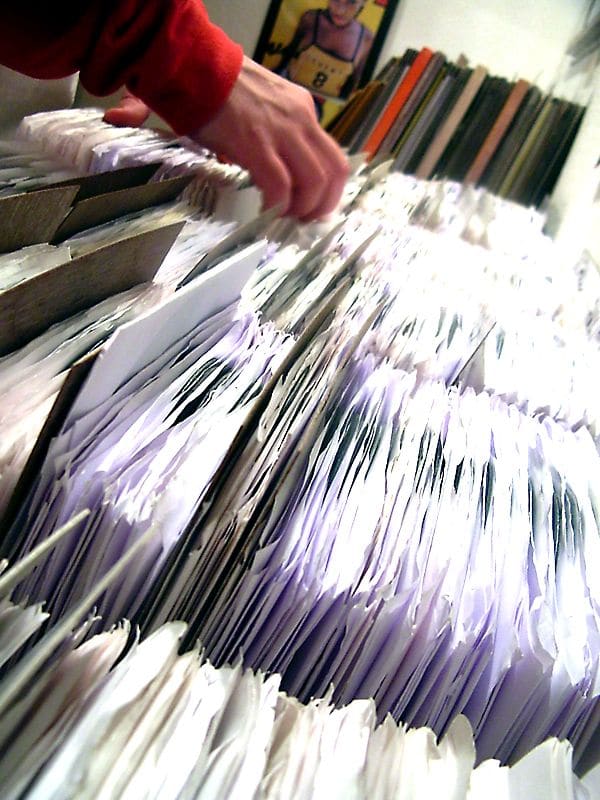
Bottom line? If I was going to whittle the two liquids down to a soundbite? I would say that Tergitol offers slightly superior upper frequencies and Triton X-100 provides slightly superior lower frequencies.
Now I’m looking for a surfactant that provides both!
For now, I will stick with Tergitol because I hear a smidgeon more information coming through via the liquid but I will continue to test the Triton X-100 which is, I have to emphasise, excellent in performance terms.
CONTACTS:
Degritter ultrasonic cleaner: degritter.com
Distilled Water: apcpure.com
Pipettes: www.amazon.co.uk
Barrel tap: www.ebay.co.uk
Use the above tap location as a visual reference only. You may prefer a different design and the price may be much cheaper to boot. There should be plenty of choice.

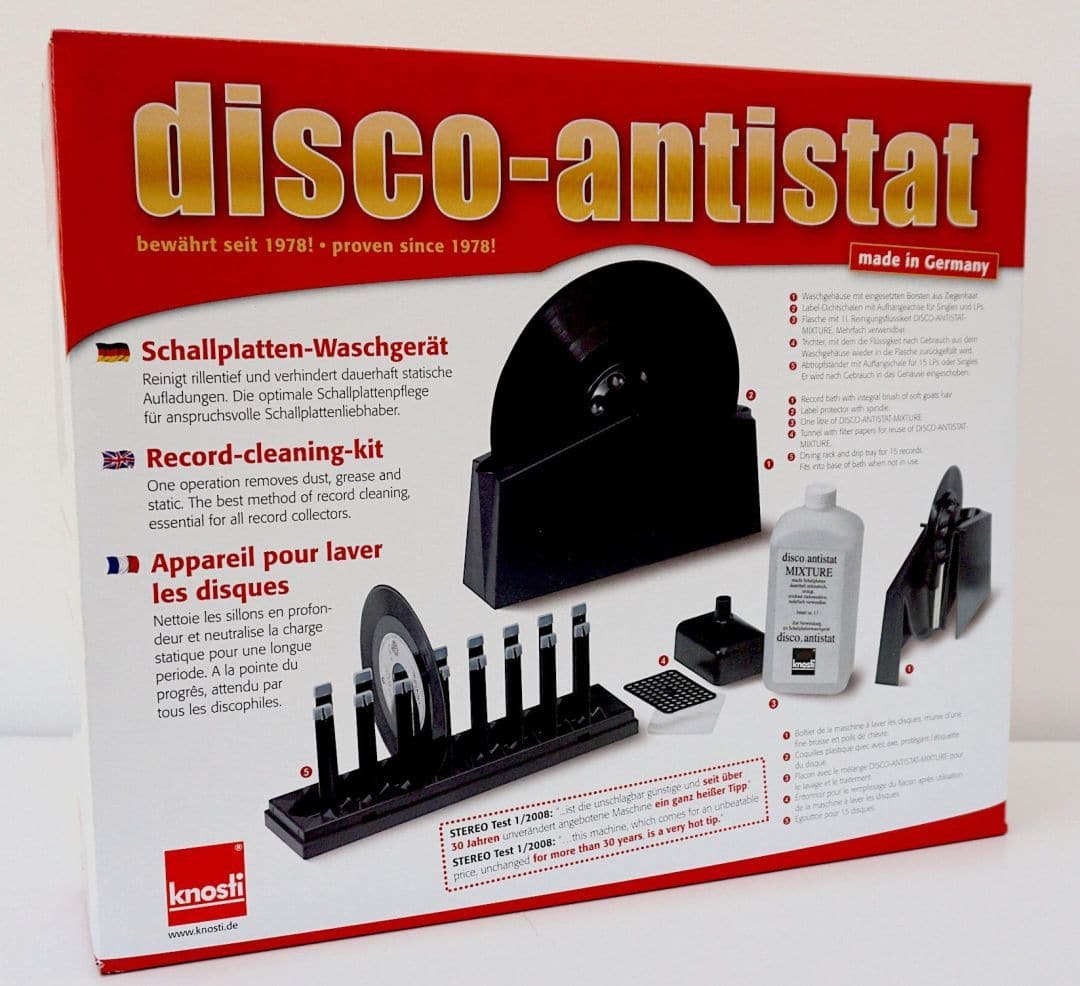
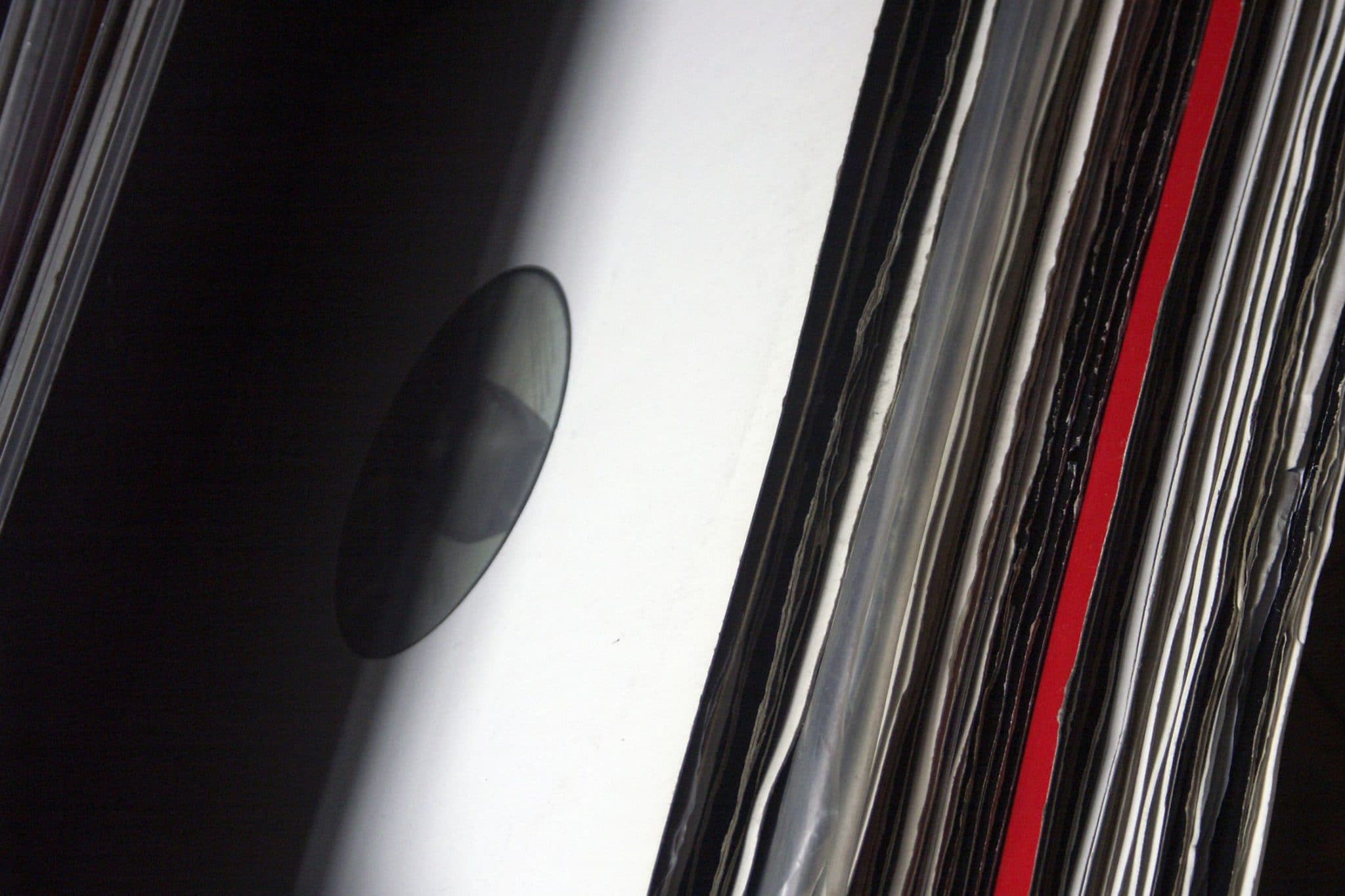
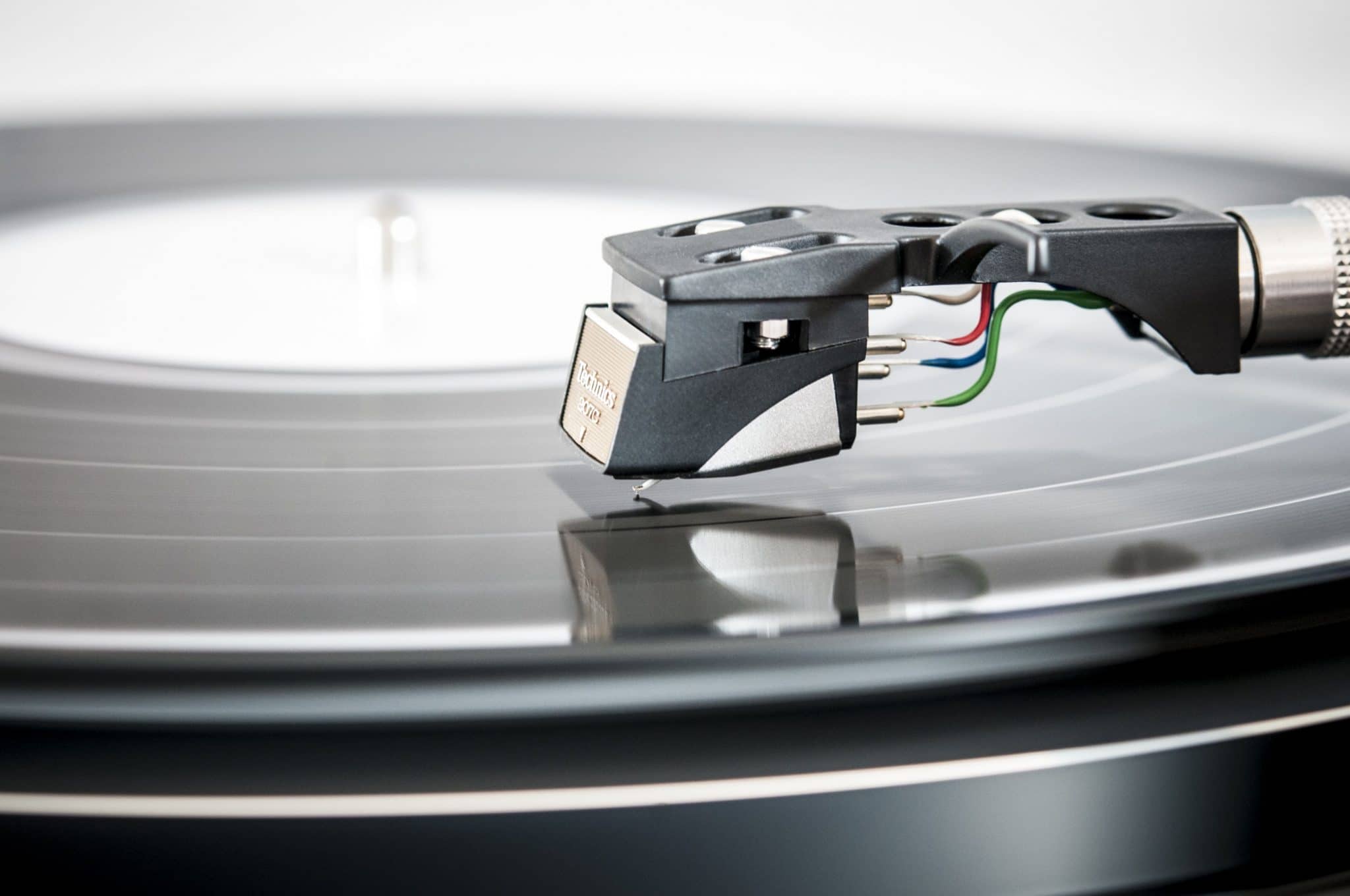
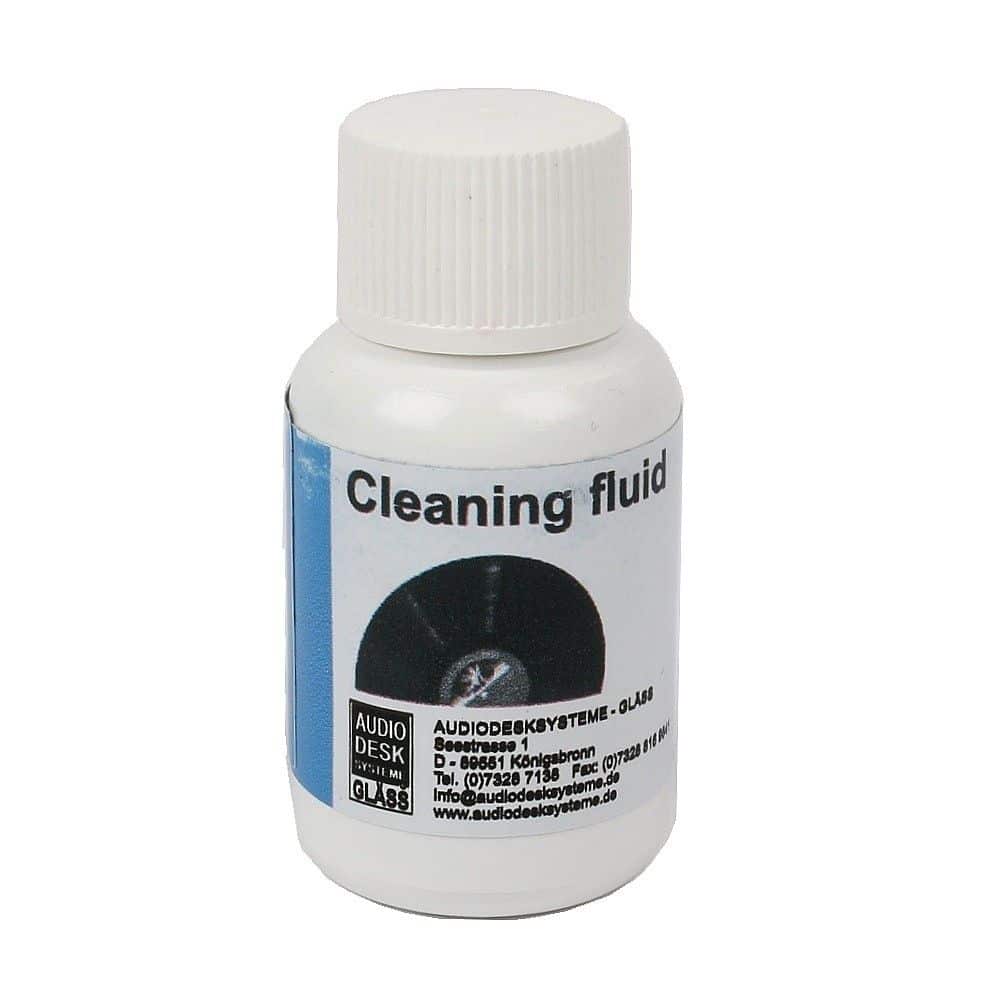
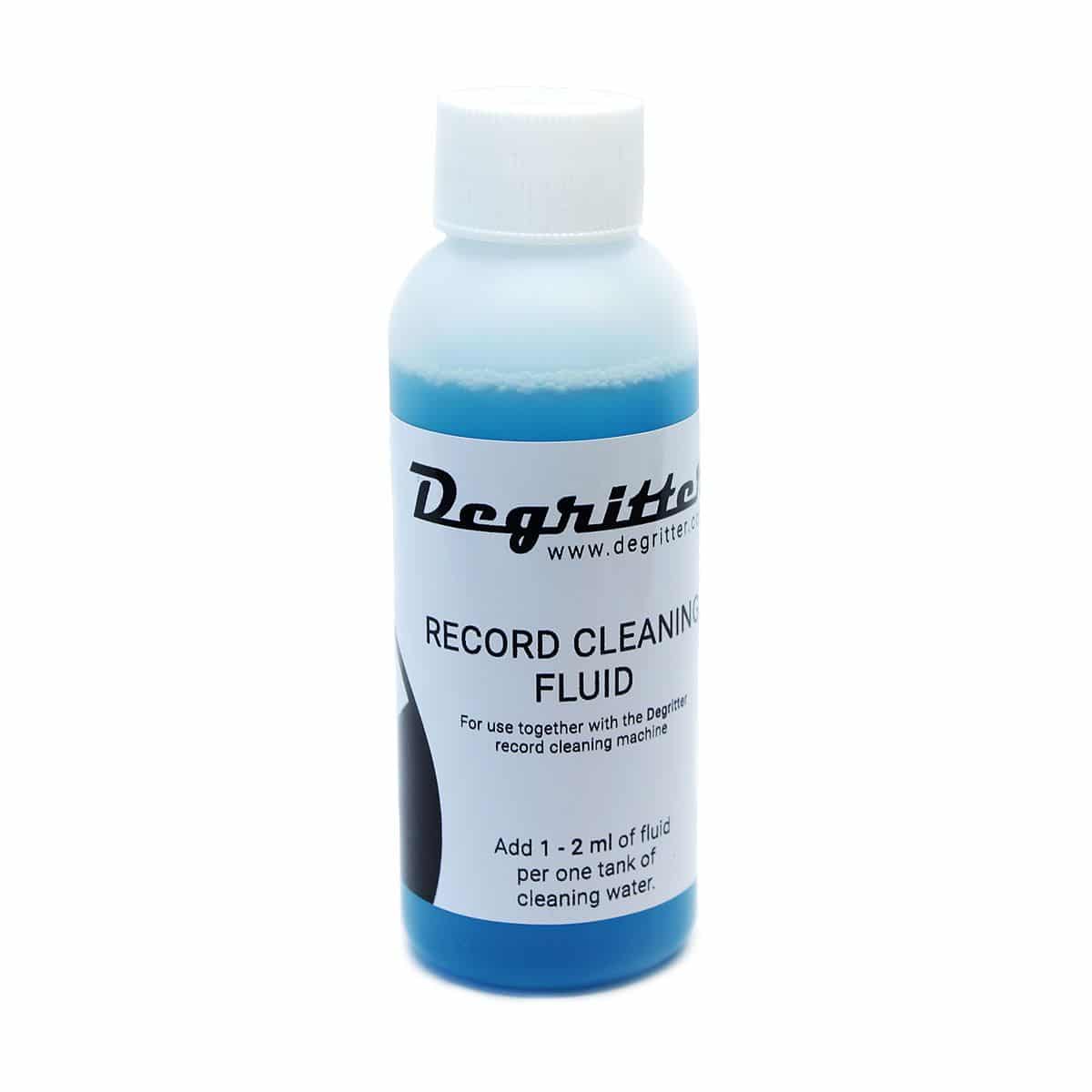
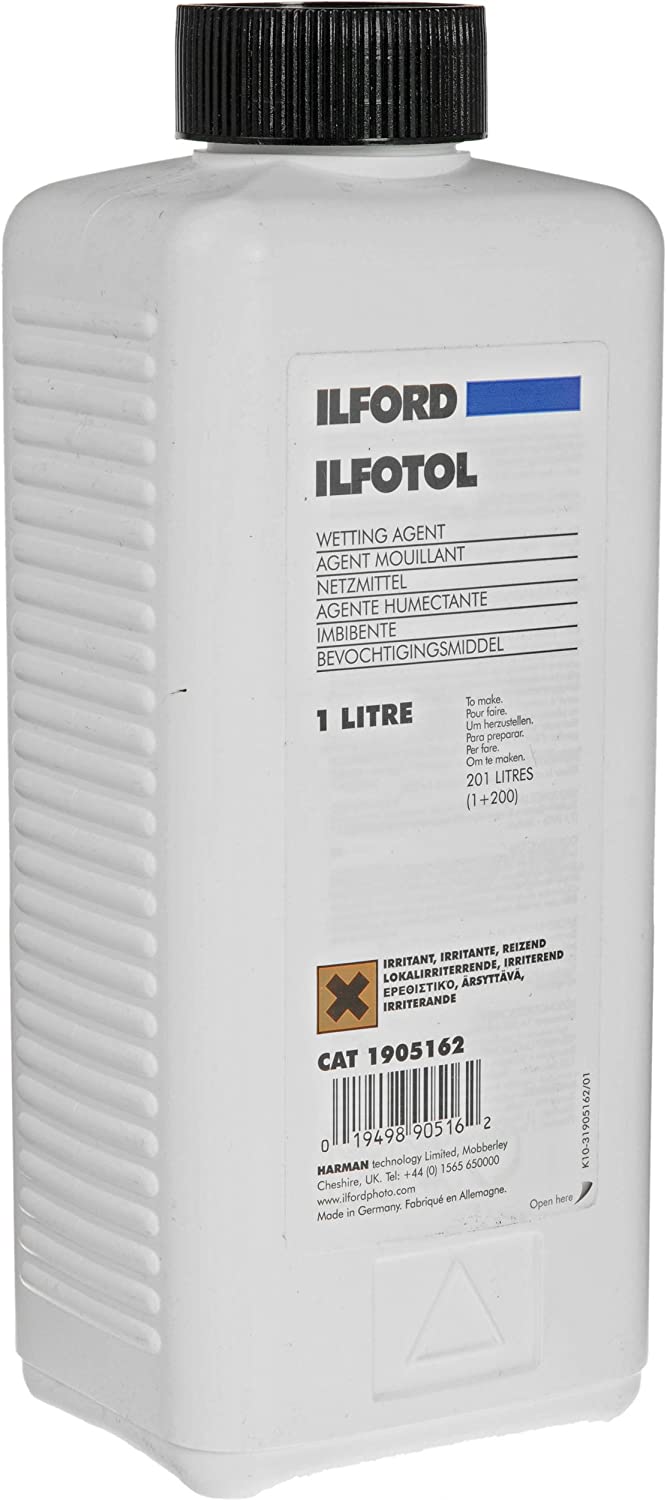
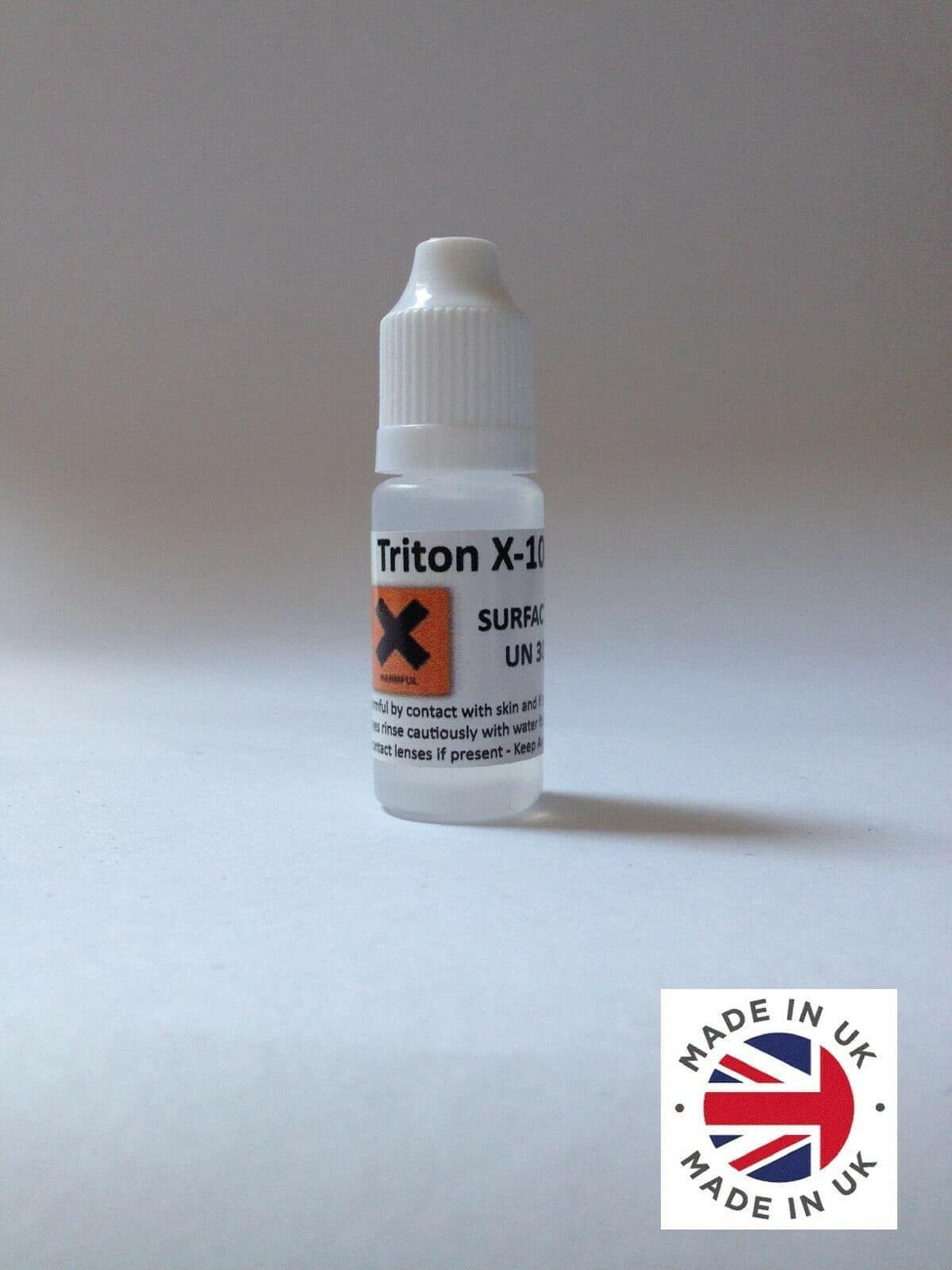
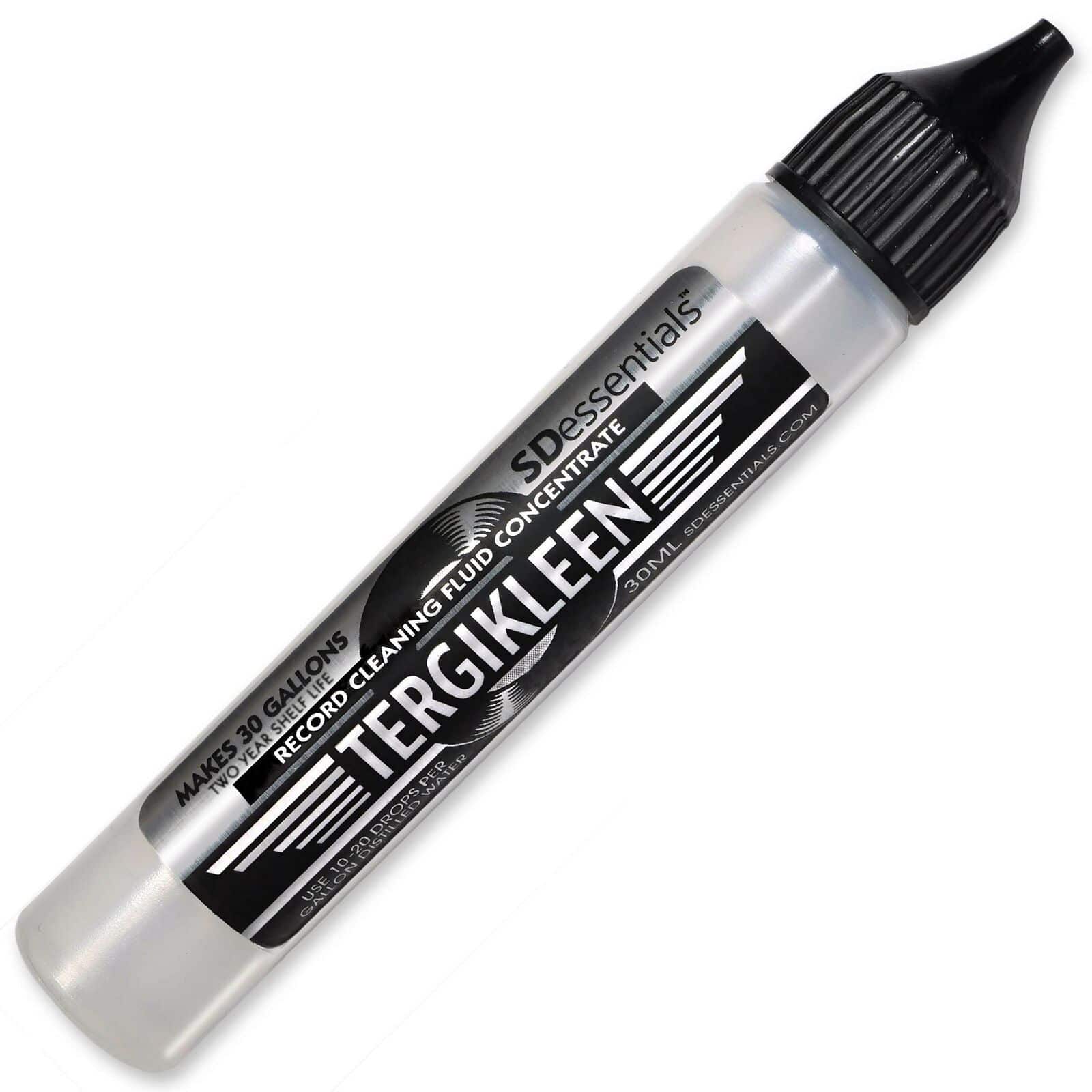
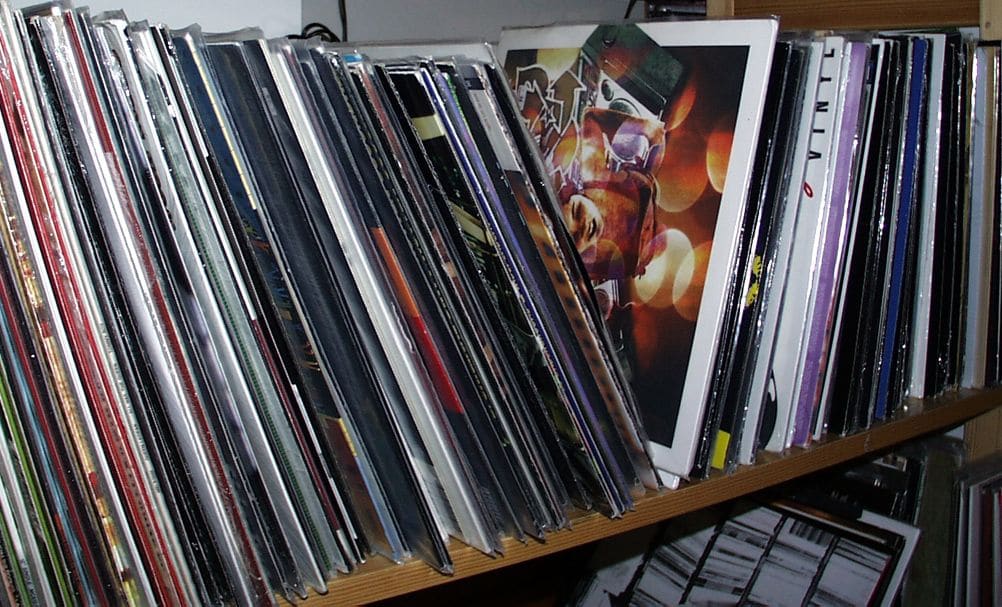


Hi Paul,
With the festive season rapidly( too rapidly) approaching it would be very handy to have part 2/3 available on here for those contemplating purchases before the end of this year, as very worthwhile guide(s). So,are parts 2 or 3 likely to appear on here at all in the near future, please ? In the meantime, I am very happy with the results obtained using your recommendations for the respective fluids, together with my Disco Antistat MK2, apart from the drying times in Autumn and Winter. So, many thanks for your continued efforts on this subject, which are very much appreciated by everyone on here. Cheers Ian
True and thank you. Part 2 is nearly sorted. It’s slow. Time is the problem because the approach of Christmas also means nasty print magazine deadlines and lots of them (I still write for those to pay bills). The industry disappears for most of January so I do December’s work but also January’s in December, which takes up more of my time. Any spare moments I have, I will proceed with Pt.2. Honest, guv.
great review. Question, would the Tergitol be suitable for both on-vinyl and mixed in the water tank application? Do you have experience with L’art-du-son-record-cleaning-fluid?
On the record or in a bath is fine Frans but on the record is more efficient. That’s the option I recommend. L’Art du Son is not really the same thing. The latter is a cleaner, the former *aids* cleaning. It helps the cavitation process.
Hi Paul. Great YouTube channel, great website, great blog! So glad I found you 🙂
Quick question, with apologies if it’s already been answered:
The makeup brush you use to spread the surfactant around the vinyl – how do you clean it and how often? It occurs to me that if you’re cleaning a very dirty record you just picked up in a charity shop, that brush will be ‘first contact’ with it, if you like, and may pick up some nasty stuff!
Thanks in advance, and happy new year 🙂
Hi Doug and many thanks for your kind comments. As for the brush? After each vinyl clean, I use a clean tea towel to dry it off but every 30 cycles I then clean it in distilled water, ruffle it against a clean tea towel and leave it to dry. One thing, I reform the bristles into a point after every tea towel ‘dry’ to maintain its shape.
Thanks Paul. Insofar as you can bring a brush of that design to a point I guess 😉
Indeed 🙂
Hi Paul, I really appreciate all your expert work which assists greatly in the pursuit of good sound.
I have a brand new Degritter RCM which I purchased on your recommendation and am mostly very impressed with.
I say mostly because I have found that a layer of background (low level) “rice bubbles” similar noise is added after cleaning – noticeable on the first playing. Most noticeable of course between tracks or during any very quiet sections of music. A second playing reduces this surface noise level by half and after a further playing the noise has all but disappeared. I have been using Degritter’s own surfactant added to the purest distilled water available that I can find.
I have searched and searched but have found no other reports of this added noise I’m experiencing.
I have just finished reading and watching your excellent report on the different surfactants but before I purchase do you have any suggestions as to what might be causing this issue? My gear is all newish Origin live Sovereign mk4 t/table Enterprise mk4 arm and a Airtight PC1 Supreme cartridge correctly set up and in good condition.
I have followed the Degritter instructions but have also experimented with trying 1 up to 2ml of surfactant, different drying times and different fan speeds etc.
Many years ago when I purchased a Hannl wet cleaning RCM I had a similar added noise issue after cleaning until I switched from Hannl’s own non antistatic fluid to one that had antistatic properties (L’art du son) and the problem completely disappeared.
Before I purchase an alternative surfactant I wondered if you happened to know whether the Tergikleen fluid or any others has any antistatic properties?
Thanks Stuart – it’s difficult to know what’s happening without actually being there but you might want to check out my Cleaning Guide here which will hopefully provide more advice: https://theaudiophileman.com/vinyl-cleaning-guide-part-1-manual-cleaning/
Using surfactant on the vinyl surface is superior to Degritter’s in-bath liquid.
You may also have a static issue so a Zerostat (https://theaudiophileman.com/zerostat/) would be a good idea to counter that. An anti-stat device is recommended anyway. I use one before I play my records. Every time. I use the Furutech DeStat which actually removes static (https://theaudiophileman.com/destat-iii-static-furutech-review/). The Zerostat reduces it. But you pay for the privilege of course 🙂
the other option is that your cleaning hasn’t finished yet and you’re hearing the dislodged grime that has yet to be fully removed. Did you read my Degritter review? That indicates a few tips in terms of recommended settings: https://theaudiophileman.com/degritter-vinyl-record-cleaning-machine-ultrasonic-review/
Hi Paul – as usual, another great and informative article!
I’m ready to mix up my X-100 in my distilled water for my ultrasonic solution, but just wanted to get some clarification. My unit takes 4 liters, so using your ratio, that’s 40 drops of X-100, but then, I reread your article and noticed you are specifying 20 “micro” drops per 2 liters. So, my question is are you using the term in a clinical/lab sense, or are you saying that the drops from the X-100 dropper appear to be smaller than usual? I ask this because a quick internet search to medical and lab calculators specify the following:
1 ugtt = 0.333 gtt
1 gtt = 3 ugtt
where gtt = drop
ugtt = micro-drop
So, as you can see, that’s a pretty big difference – if you’re sure your X-100 dropper is producing clinically defined micro-drops, then for my regular dropper, I would only use ~26 drops for my 4 liters of distilled water vs 40. If you’re not sure, then perhaps the next time you mix up a batch, would you please measure what the 20 drops from the X-100 dropper equates to in ml.? -thanks & cheers!
Hi Jimmy – have you seen my comments about X-100, its ban in Europe and the problems it has re. wildlife? The drops comment related to the integral bottle dropper I faced when buying my example. The drops from the same were noticeably smaller than a ‘standard’ pipette-type dropper. In general terms I found them half the size so doubled the amount for the same quantity of liquid. You don’t have to be too precise here. A drop or two either way is fine.
I understand X-100 is no longer available in Europe but I just purchased some in Canada as I could not get Tergitol. Following on from Paul’s question I to am interested in better understanding how much Triton I need for a 4ltr ultrasonic bath for the bath approach and if I use the direct apply would the mix ratio be the same. There seems to be little guidance on this topic. Thank you for your help and great videos.
Hi Chris – it depends on the applicator but, if you use the same bottle I used, that produces half-sized drops so I measured 20 of those per litre.
I don’t recommend adding that direct to your bath though. You can, no harm will be done but the efficiency will be reduced.
The 20 drops are diluted into a litre of distilled water. That diluted liquid is then the basis of a surfactant (with or without Glycol) to apply directly to the vinyl surface. Not the bath.
See my Guide here: https://theaudiophileman.com/vinyl-cleaning-guide-part-1-manual-cleaning/
I’m very, very late in replying. However, in an ultrasonic tank type cleaner, I would use Triton X-100 (assuming you are still using it) at a dilution rate of 0.4ml per litre. This is sufficient to ‘wet’ the record and offers some detergency.
You can find Tergikleen (Tergitol) on Amazon. It’s better than Triton- which has been banned. It’s about $28 US for a tube that will literally make hundreds of gallons of cleaner. It’s also less “masking” and in my opinion, easier to rinse off.
Hi Chris, if it’s the same stuff that I got, it doesn’t dissolve very well with water, I had to mix it with a small amount of isopropyl alcohol then mix it with water. I’m using Ifotol now!
Hi Paul
I need to ask you if you’ve had this happening whilst applying surfactant mixture.
With some records it spreads then heads up and moves without leaving a coating to some parts of the vinyl.
If I remember correctly “Kirmuss” refers to this as the coating on the vinyl stopping it spreading and to therefore may need todo more surfactant applications followed by ultrasonic bath.
I wondered if I needed to add more surfactant to my mixture to make the water “wetter” as they say?
Any help greatly appreciated
Regards
Paul
Hi Paul – when using a vertically-mounted ultrasonic cleaner – that is, your record stands vertically in the cleaner), it is subject to gravity which pulls at the liquid. Even horizontally, as you know, it moves all over the place. Two things. Firstly, have you used a Kabuki brush to push the liquid into the grooves? Secondly, using Glycol fixes the liquid in place when the vinyl is vertical – have you checked out my Cleaning Guide? Look at Pt.1 and follow the record prep guide in there.
Thanks for your reply Paul.
Yes, I have read your guide and followed it except for the kabuki brush.
I have a goat hair record cleaning brush called “Wetgoat”.
I have been using that.
Perhaps I got the glycol/surfactant/water mix wrong?
I have followed instructions on multi cleaning and then into the ultrasonic bath containing 7% IPA several times and hear incredible details and a more dynamic, alive sound than I heard previously, to the point of a bass guitar sounding rounder and more natural with real weight.
So I’m doing something right button completely.
Hi Paul – The Kabuki is only used to encourage surfactant to get closer to the surface of the vinyl disc, it’s not there for cleaning so is not an alternative to a goat hair brush. It’s a different part of the process. If you put surfactant on a vinyl disc then you’re bound to trap air in the grooves. The Kabuki – with its super-dense, soft, micro bristle – helps remove that. Try that first. If you followed the ratio guide properly then your ‘mix’ should he fine but by all means recheck.
Bingo!
All hail to the Kabuki brush üòä
Much, much better!
Thanks Paul